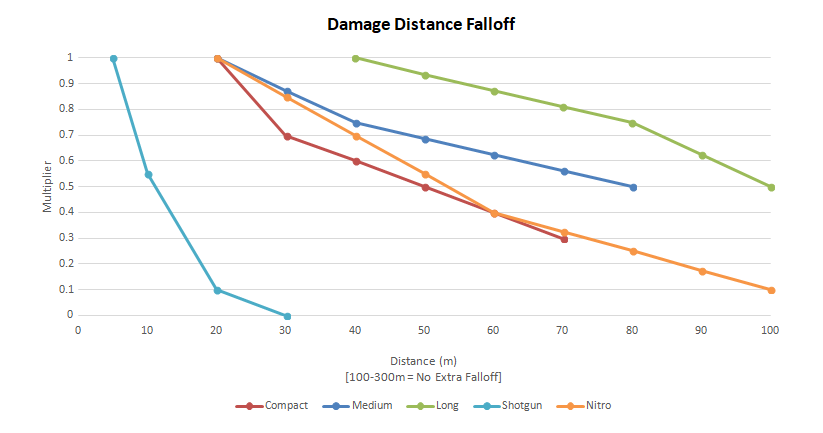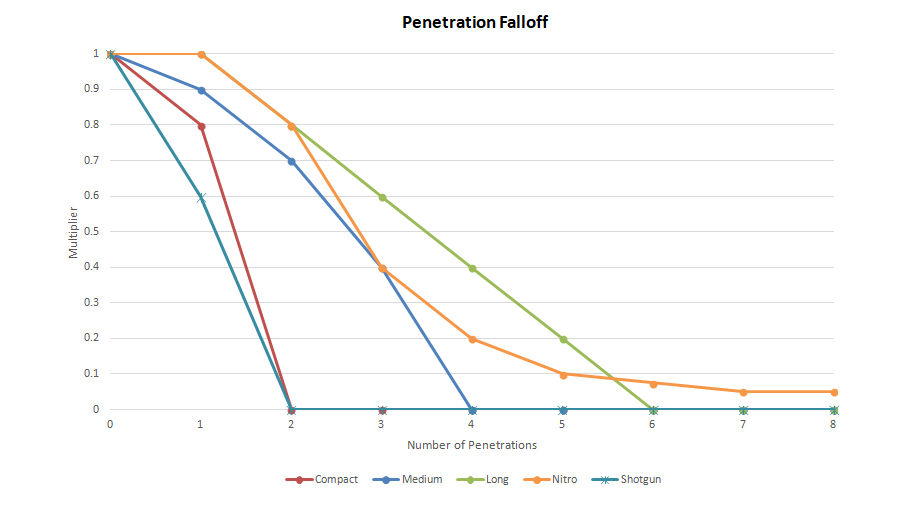Surviving a round of Hunt: Showdown involves a lot of strategy. The more you know about your weapons, the better the chance that you survive. Today Senior System Designer David West is here to get into some details about how the weapon system works, why there's no bullet drop, and where you should be aiming to hit a moving target.
We had a number of goals for Hunt's weapon system. First of all, we wanted every weapon to look and handle like the firearms used in the 1890s. The entire team has put a lot of effort into handcrafting a historically accurate environment that completely immerses the player—and for that to work the weapons need to look and feel accurate as well. We also wanted the system to be easy to learn, but with enough variables to ensure that mastering it could require skill and time. What we ended up with was a physically simulated projectile based weapon system.
How it works
When a weapon is fired, a physical object is created in the world which represents the bullet.
A physical force is applied to this bullet in the direction that the weapon is aiming, and this force propels the bullet through the world.
Because the bullet is a physical object, the physics properties of the bullet effect how it travels. That means that each type of ammunition has different properties and will move slightly differently.
There are two exceptions to this principle. The first exception we have on bullets is gravity—that is to say, gravity has no effect on them so there is no bullet drop. I will explain why we chose to do this a little later. The second exception is when bullets are traveling through water. If a bullet is traveling through water, it will have a mild bullet drop.
When a bullet collides with another physical object, a number of calculations take place. First, damage must be calculated based on what the bullet hit. For example, if a bullet hits a living target, damage differs between a headshot vs a shot to the arm or leg. Another calculation determines whether the bullet will penetrate the object it has hit. This calculation looks at the material of the object hit, the thickness of that material, and how many other objects the bullet has passed through on its way there.
We've also built in a “favor the shooter" mechanic. This means that the system compensates for the lag between your shot and the server, which ensure your shots are reliable, regardless of connection speed. However, to make sure that no one abuses this feature, we've to add limits to stop people artificially increasing their ping to get an advantage.
Why there's no bullet drop in Hunt
So, to get back to bullet drop, and our reasons for not using it in Hunt. There were two main reasons for doing this: short combat distances and the lack of modern scopes.
First a closer look at the combat-distance factor. Hunt is set in a Louisiana bayou, with plenty of swampy forests and half-sunken wooden structures, as well as overrun farms and settlements where people appear to have built makeshift barricades to survive the horrors that emerged around them. As a result, you often fight at close quarters rather than shooting at targets over hundreds of meters of open fields. We do have those as well in Hunt, but the typical combat situation is at around 50-75 meters. For that distance, you simply do not need to consider bullet drop.
Furthermore, the weapons in Hunt use iron sights. Games that incorporate more modern equipment usually can rely on an array of red-dot scopes and mid-range combat optics, as well as sniper, night-vision and thermal scopes. Because Hunt is set in the age of iron sights, you won't aim through a scope for most of your shots. With bullet drop, you would have to aim above the target, which forces the shooter to effectively have to guess where to shoot. That isn't something we want players to have to do in Hunt. We always want Hunters to feel like they are in full control of a situation, and that if they miss a shot, it is due to their mistake and not a random element in the game. Every shot counts in Hunt, and Hunters needed to know that if they make the right calculation on each shot, they will reliably hit the target.
Ammo types
We have five ammo types in Hunt: Showdown, and each type has different characteristics. In the table below you can see the speed of each type and the maximum distance each can travel.
The damage each bullet can cause decays over the distance. The rate of this decay for each type can be seen in the first graph. The second graph shows how damage decays when bullets penetrate surfaces.
|
Ammo Types |
Speed (m/s) |
Max Distance (m) |
|
Compact |
375 |
300 |
|
Medium |
500 |
300 |
|
Long |
800 |
300 |
|
Shotgun |
450 |
45 |
|
Nitro |
610 |
280 |
The damage each bullet can cause decays over the distance. The rate of this decay for each type can be seen in the first graph. The second graph shows how damage decays when bullets penetrate surfaces.

Penetration Graph note: Damage does not fall off between penetrations so the damage distance fall off values need to be taken into account when reviewing this graph. For example: The nitro ammo keeps the same multiplier between penetration 1 and 2. The decrease to 0.8 only occurs with the second penetration despite the graph showing a decline before the 0.8 marker.
Where to aim
The most important takeaway from all this for players is that you need to aim in front of moving targets.
How far in front of a target you have to aim depends on your weapon's ammo type, the distance to the target, and your target's speed. So when you aim at a Hunter 100 meters away who is running from left to right, take note:
-With a long bullet, eg. a Mosin-Nagant M1891, you would need to aim roughly 0.56 meters in front of the target in order to hit the center of the target.
-With a medium bullet, eg. a Vetterli 71 Karabiner, you would need to aim roughly 0.9 meters in front of the target in order to hit the center of the target.
-With a compact bullet, eg. a Winfield M1873, you would need to aim roughly 1.2 meters in front of the target in order to hit the center of the target.
But when you aim at a Hunter 100 meters away who is walking from left to right, note the following differences:
-With a long bullet, eg. a Mosin-Nagant M1891, you would need to aim roughly 0.31 meters in front of the target in order to hit the center of the target.
-With a medium bullet, eg. a Vetterli 71 Karabiner, you would need to aim roughly 0.5 meters in front of the target in order to hit the center of the target.
-With a compact bullet, eg. a Winfield M1873, you would need to aim roughly 0.66 meters in front of the target in order to hit the center of the target.
What's Next
We plan on improving the weapon system in Hunt throughout Early Access, adding more granularity where needed and improving our hit prediction, wall penetration, and damage systems step by step. One of our next challenges is going to be the implementation of sticky munitions, like crossbow bolts, throwing knives, and sticky bombs that players will also be able to retrieve again afterwards. Stay tuned for more details about Hunt's other gunplay mechanics in the future!
++
Updated 13th June, 2018 with the latest damage falloff and penetration falloff graphs.
++
